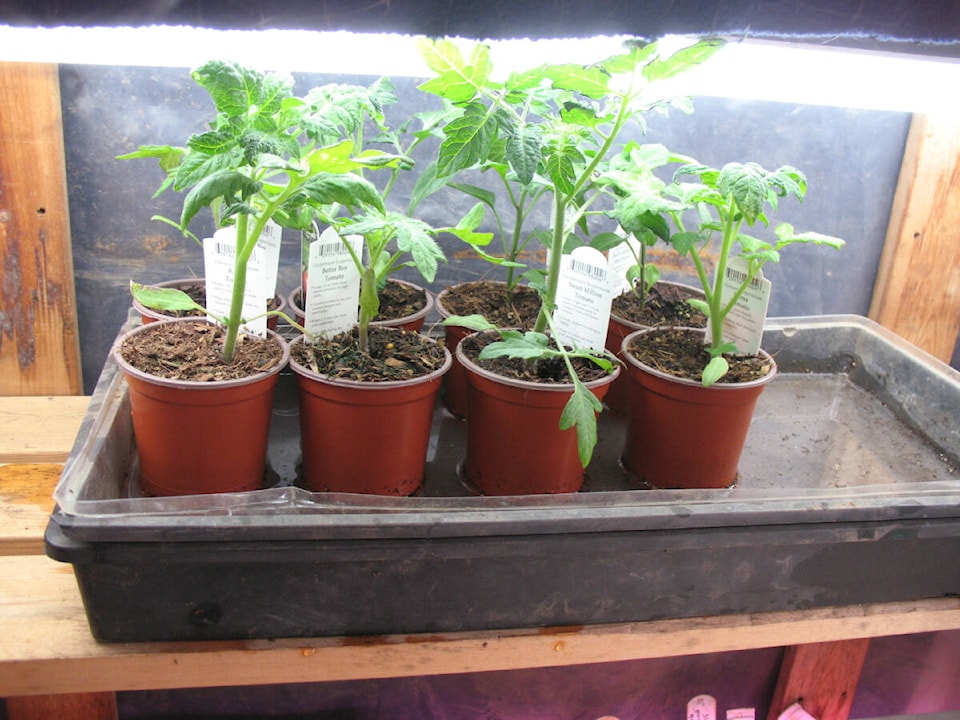By Mary Lowther
Every season has its needs. Over the dreary winter months I have been beating the drum about soil preparation, composting and remineralization, but the vernal equinox has come and gone. Now is the winter of our discontent made glorious springtime, and it becomes incumbent for the gardening columnist to scribble timely articles about actually planting and growing. Last week, for example, we discussed tomatoes.
I am enthusiastic about tomatoes. They are nutritious, delicious and when grown properly they are incredibly prolific. Last week I sat down to write about how I grow tomatoes and discovered I have a great deal to say. My first draft was so detailed and comprehensive that there would have been no room left in the newspaper for advertisements or letters to the editor, and that would never do.
This problem is not unique; I seldom have enough room to say everything I consider important and refuse to skip over any relevant details. Faced with necessity I decided to use the same approach I do with my kids and present my information in installments. Here follows my continued take on growing tomatoes, a most versatile fruit.
I started my tomato seedlings two weeks late this year. It should have been March 15 (the famous Ides) but I procrastinated and it’s a good thing I did as mice ate the lettuce and broccoli seedlings sown the week before and no doubt the tomatoes would have suffered the same fate as Caesar. Still, the ones I bought from Country Grocer look great and I started some more from seed in the first week of April. Given that we can start them up to the end of April and still get a decent harvest, I should be okay. Besides, the mouse traps are doing the trick.
I read somewhere that one should remove the first cluster of flowers on indeterminate varieties, not allowing them to fruit because these tomatoes may not develop well. In practice, when I left the first cluster of fruit on they got eaten by slugs and sow bugs. I allow one side shoot to grow as long as the main stem. Every other side shoot gets nipped off as soon as I see it so it won’t take energy away from the two vines I grow out. Some authors recommend nipping off lower leaves too, but I leave them all on since I think their chlorophyll contributes to better growth.
Because late blight destroys so many tomato plants and because our growing season is so short, I plant short season varieties like Early Girl, Romas and cherry tomatoes, and often grow beefsteak tomatoes in case the summer is longer than usual and they have enough time to develop because beefsteak are my favourites.
I use soaker hoses that don’t spray water on the plants to conserve water, which helps prevent late blight by not getting leaves wet, keeps slugs at bay and allows me to irrigate when watering restrictions come into effect. The even watering method of every three days for half an hour allows the tomatoes to grow without developing tough skins that might burst when we have a good downpour after dry weather.
I prepare the tomato bed by digging in a quarter inch of compost and organic fertilizer at the rate of four litres per hundred square feet and letting that sit for a week or so in hopes the birds will have at bugs and weed seeds. When transplanting seedlings, I dig out a hole and mix a quarter to a half cup of fertilizer in the bottom soil, then re-fill the soil, dig a small enough hole to fit the transplant into, fill that with water and plant the seedling. I cover that with warmed-up Wall ‘O Waters and when leaves emerge out the top I remove the Wall ‘O Waters and string up the indeterminate seedling to whatever support I’m using that year. This year I’ll follow Solomon’s recommendation to cover the determinate varieties with a tunnel of plastic to have an early harvest. When the leaves start to push on the plastic, I’ll remove it.
I lay soaker hoses along the bases of the plants and set them up with a water timer. I sprinkle a handful of fertilizer around each plant when they start to fruit and pour compost tea on the roots every two to three weeks. There’s more to say about tomatoes, but I’ve run out of room again.
Please contact mary_lowther@yahoo.ca with questions and suggestions since I need all the help I can get.
